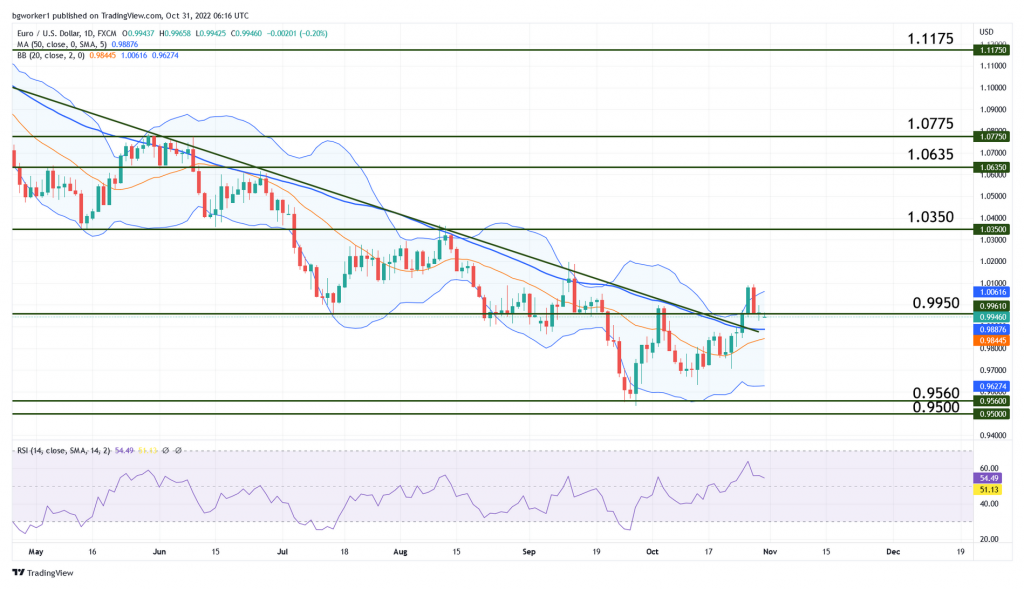This Could Be Big: Fed Rate and NFP Ahead
EUR/USD Edges Higher Following ECB Rate Hike
Central banks are pumping percentage points into their respective interest rates and it looks like they are not going to stop until deflationary signs emerge. Last week the ECB added 75 bps to the interest rate, bringing it up to 2.00%, while the US Dollar is gearing up for a massive week, with two crucial announcements.
The Federal Reserve is set to announce the interest on Wednesday and although there was some speculation regarding a Fed pivot, it looks like we are not there just yet because the U.S. economy continues to post strong data. Later in the week, the Non-Farm Payrolls report comes out, making it a very interesting week.
Key Data for the Week Ahead
The first notable event of the week is scheduled for Tuesday at 2:00 pm GMT: the U.S. Manufacturing PMI. Although this is not known as a major market mover, the PMI is a leading indicator of economic health and can have an impact on the greenback.
Wednesday traders will focus on the ADP Non-Farm Employment Change, which offers an early look into the employment situation in the U.S. (excluding the farming sector and government). The release is scheduled at 12:15 pm GMT and will be followed at 6:00 pm GMT by the FOMC Statement.
The statement contains the interest rate decision and insights into the reasons that determined it. At this point, it is almost certain that the FOMC will add another 75 bps to the rate but surprises can happen. The usual press conference follows at 6:30 pm GMT.
The Non-Farm Payrolls report is scheduled for Friday at 12:30 pm GMT and is accompanied by the Average Hourly Earnings and Unemployment Rate. These three indicators paint an accurate picture of the employment situation in the U.S. and have a huge impact on the US Dollar. Employment is expected to slow down (200K new jobs versus the previous 263K), which could be an early sign that inflation is starting to subside.
Technical Outlook – EUR/USD
After a brief visit above parity, the pair returned to test the S/R level at 0.9950 and is currently trading right on this level. This means that we are dealing with a classic bounce-or-break scenario where the level will turn into support or resistance.
If the price will descend below 0.9950, the level will become resistance once again and the pair will probably continue lower. The upper Bollinger Band was hit and it rejected the price lower, which increases the probability of a move down.
If this scenario takes shape and the pair descends below the long-term bearish trend line, we may see a stronger drop but a lot will depend on the FOMC rate decision and the jobs data that comes out this week.
